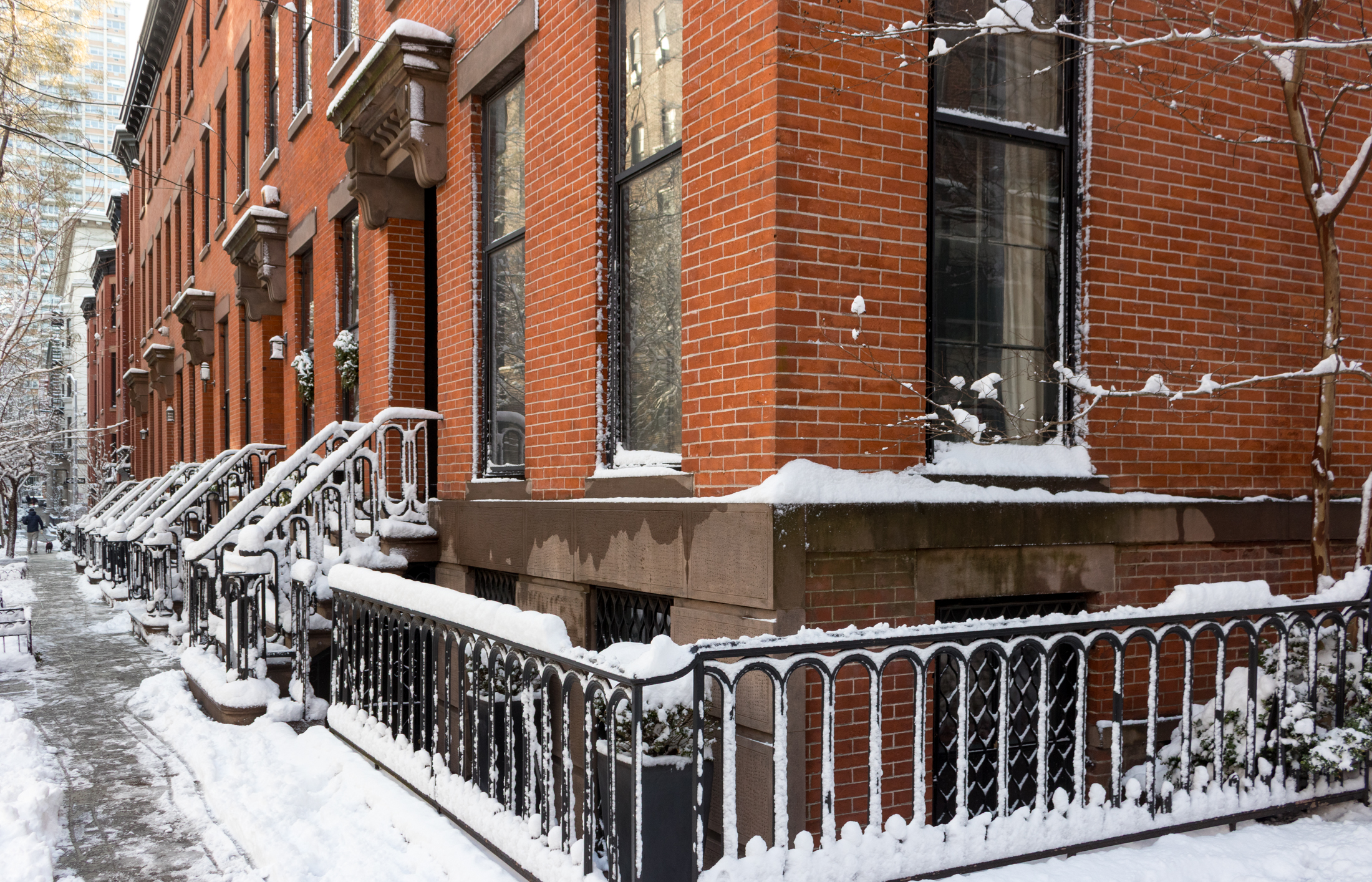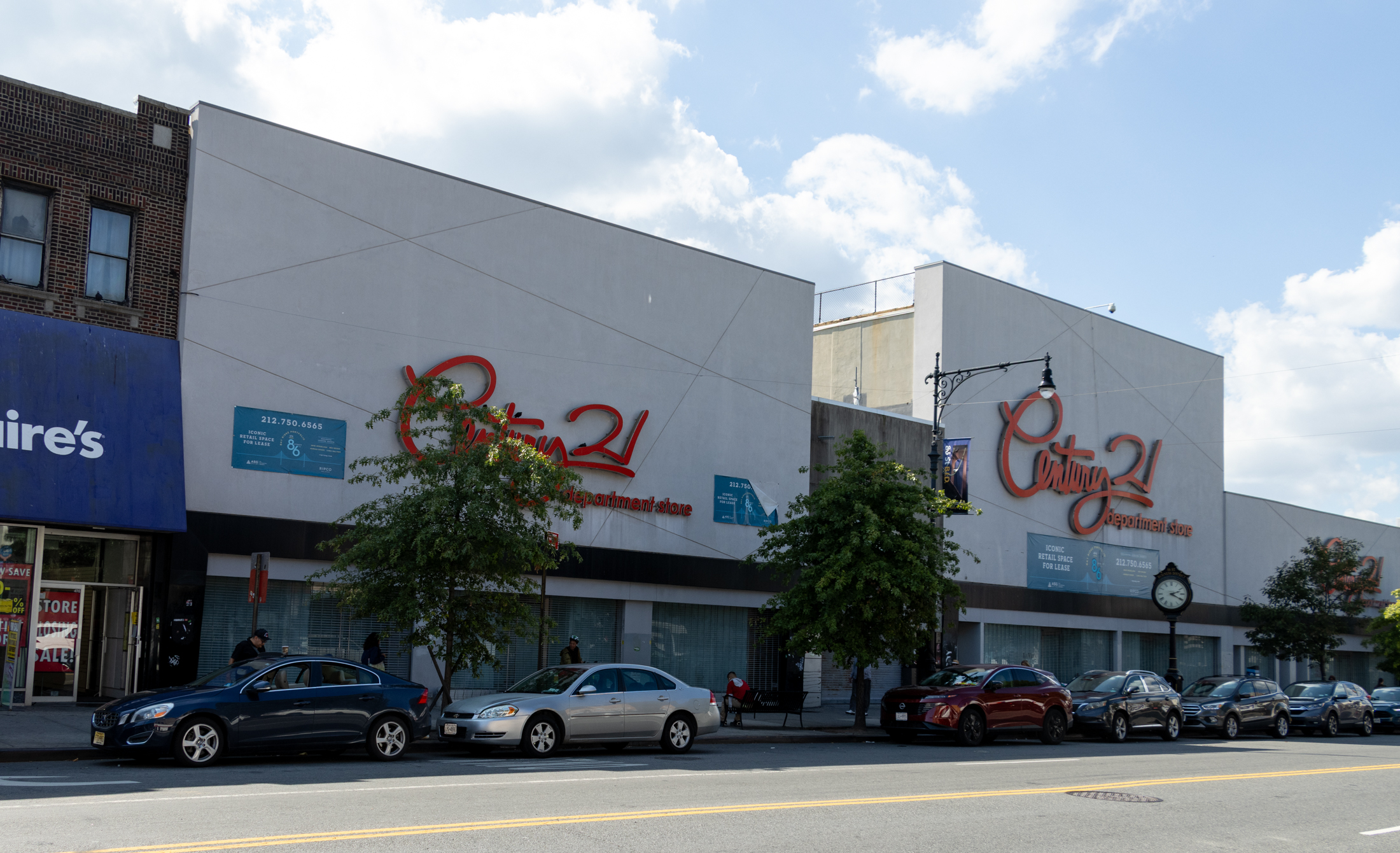Marty and Mayor Deal Death Blow to B'kln History
Selling the public a giant shovel-ful of b.s., Brooklyn Navy Yard Development Corp. President and CEO Andrew Kimball yesterday claimed that he has”no option” but to tear down the ten historic residences for naval officers that line Flushing Avenue at the Southwest corner of the yard. The buildings, which were built between 1858 and 1901,…


Selling the public a giant shovel-ful of b.s., Brooklyn Navy Yard Development Corp. President and CEO Andrew Kimball yesterday claimed that he has”no option” but to tear down the ten historic residences for naval officers that line Flushing Avenue at the Southwest corner of the yard. The buildings, which were built between 1858 and 1901, will be replaced by a 60,000-square-foot supermarket and a 300-car parking garage. Not everyone agrees with Kimball’s analysis. “[Preserving Admirals Row] is definitely doable and worth doing,” said New York Landmarks Conservancy official Alex Herrera. “They’re really a part of Brooklyn and Brooklyn’s history.” In another betrayal of Brooklyn’s heritage, Marty Markowitz joined Mayor Bloomberg in hailing the forces of progress: “A crucial community resource must take priority over preservation at Admirals Row.” Marty better hope he just won a lot of new votes from residents of the Farragut Houses (the most likely patrons of the supermarket) because he sure as hell just lost a lot of support among Brooklynites who care about preserving the borough’s history.
Addendum: Marty’s office contacted us to clarify that Navy Yard officials make all decisions regarding Admirals Row, and that he was simply stating his priorities in the Daily News article. He also pointed out his efforts to restore the historic Loew’s Kings theater in Flatbush and to preserve the character of Coney Island, including the Parachute Jump, as it is revitalized.
Admirals Row Sunk [NY Daily News]
Brooklyn Navy Yard Expansion Begins [NY Times]
Admirals Row [Historic Fort Greene]
Photo by D.K. Holland





I’m as incensed about this as anyone; indeed, I wrote letters about it last year to numerous city offices and newspapers. After apending some time with the Navy Yard archivist, I have come to understand two unfortunate and related facts: First, while theoretically salvagable (really, anything is theoretically salvagable), the houses have been so compromised by the elements (literally trees growing into structural walls and foundations), that “saving” them would amount to reconstructing them almost entirely. The ROI analyses of this scenario are, as one might imagine, thoroughly unimpressive. Second, the real culprit in all of this is neither the Yard nor the city but–wait for it–the Army Corps of Engineers. Yes folks, the same people who brought you the levees in New Orleans were designated as the stewards of Admiral’s Row, and for nearly 30 years did absolutely nothing to stave off decay and destruction.
They’ve been neglected for years and it’s interesting to me that no one really gave a crap until they issue came up. Honestly, how many people knew or cared about these houses until recently? Did anyone stop to think this may be a hughe benefit to the hood serving both the Farragut houses and shiny new inhabitants moving across the river?
a 300-car parking garage?
Just goes to show you how backward most of these corrupt land-grab/sweetheart deals are – they are designing for the car – robert moses style – no long term thought about how to better manage traffic, just build build build build build and pass off the expense and problems to the next generation. These developers are careless, thoughtless and greedy. if they were at least competent I wouldn’t have as much of a problem with them. Ever meet any? Most of them just exude scum, worse than personal injury lawyers.
The “underserved” community is right next to Brooklyn Heights and Dumbo. There are a multitude of services in this area. Probably more than any other public housing faciltiy.
Those houses would be beautiful restored along that street. And I am sure they would recieve top dollar. But whatever, pave it over. More concrete structures and bland architecture. Soon we will look like Belgrade.
this is one of the most destructive administrations in history he’s not improving NYC or brooklyn one iota, he’s only thinking about a quick buck.
60Kft supermarket – – again he’s favoring big businesses at the expense of small…this is subsidized corporate welfare, and as always the poor are paraded out as an excuse.
Every time this happens the city loses some of its aesthetic value (and we all know that these buildings will be replaced by ugly, faceless buildings.
long term that’s bad for the city and its #1 industry tourism, not to mention quality of life.
What is the motivation behind Bloomberg’s relentless careless robert moses style development?
It is possible to care deeply about preserving Brooklyn’s rich history and look toward future use of land that could benefit the community in other ways.
Have you spoken to both sides regarding this issue? Have you toured the site? Have you asked about the variety of ideas that have been considered? Maybe you have but it certainly does not surface in this post. The issue is far from black and white and certainly deserves more exploration than this knee-jerk, reactionary blurb.
Id love a whole foods as a fort greene resident. Just doubt theyd set up shop across from the projects. Just being real….
Hmmm…. 60,000 sq ft… parking garage… Whole Foods, anyone?
These buildings have been decrepit for decades and serve no useful purpose. Giving an underserved community a grocery store is a far better use of this space. I’m sure most area residents would agree.